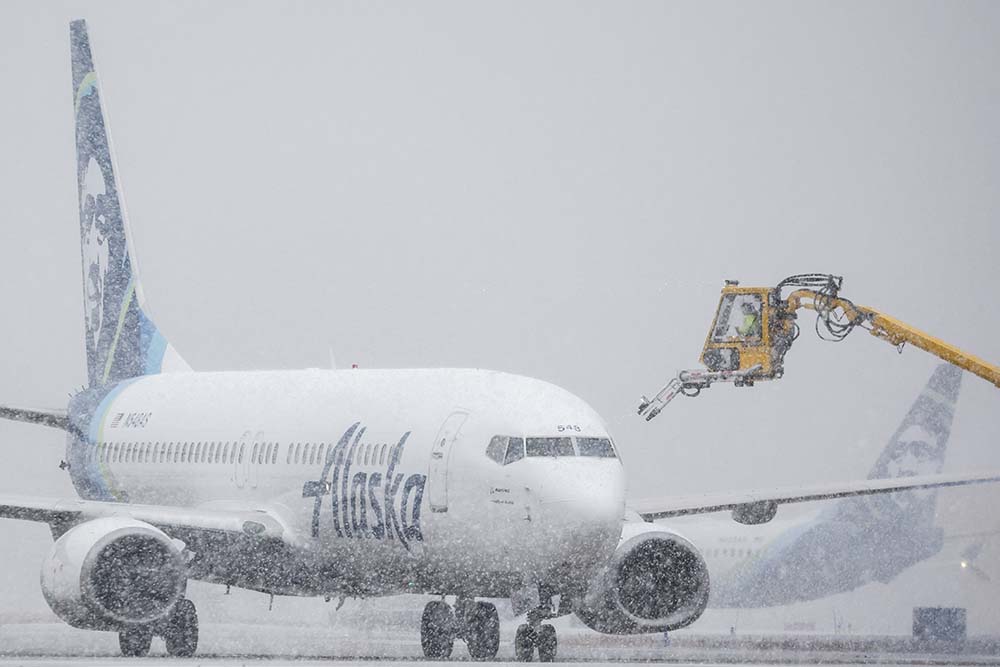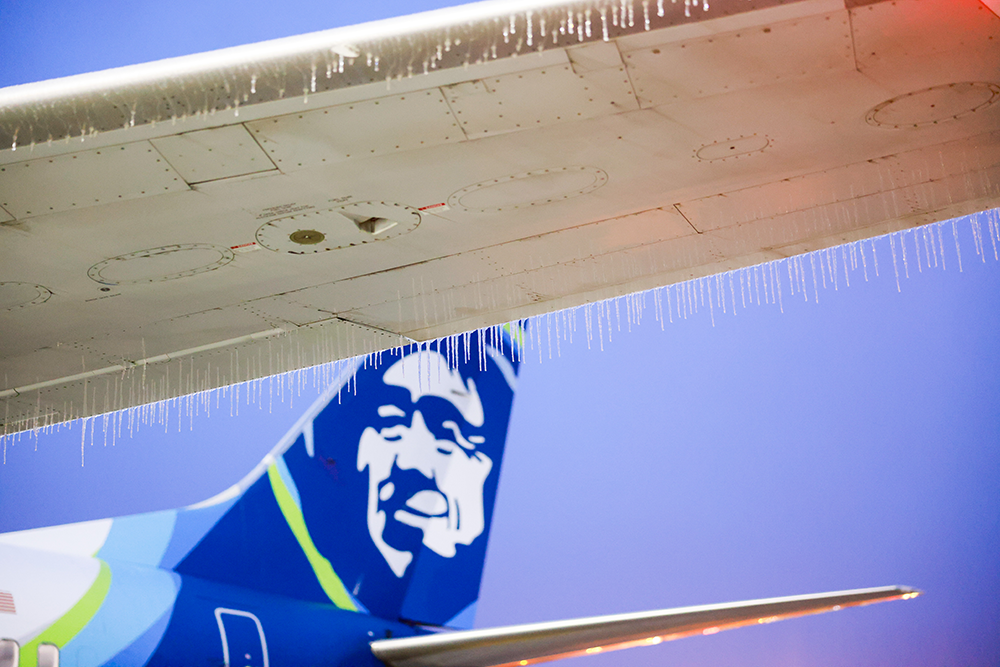Our operations are back to normal after winter wallops. To our guests: Thank you for your patience
Share
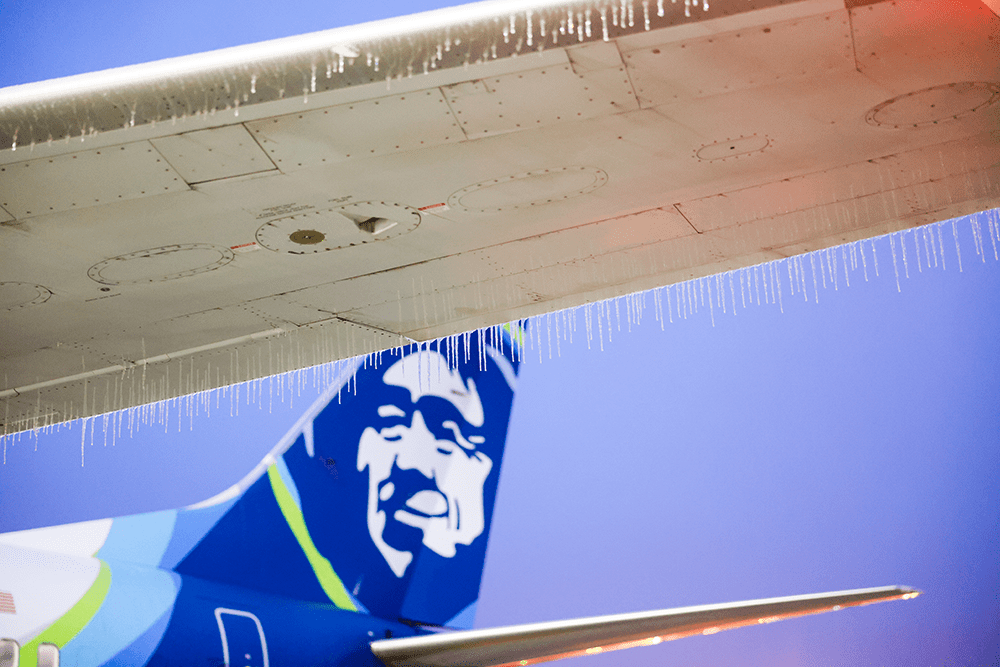
Ice hangs off the wing of an airplane at Sea-Tac International Airport. Photos by Ingrid Barrentine.
WEATHER UPDATE: In the wake of the winter storms, our operations have returned to normal across our network. We continue to help our guests with travel arrangements for flights that were canceled over the past week and a half, including booking them on other airlines to get them to their destinations. To make traveling less burdensome for those looking to book new flights in the wake of weather disruptions, we have lowered our fares in select cities.
For guests whose travel was affected by winter weather, refunds and reimbursemetns are available. Learn more here.
Updated @ 1:53 AM PT on 12/30

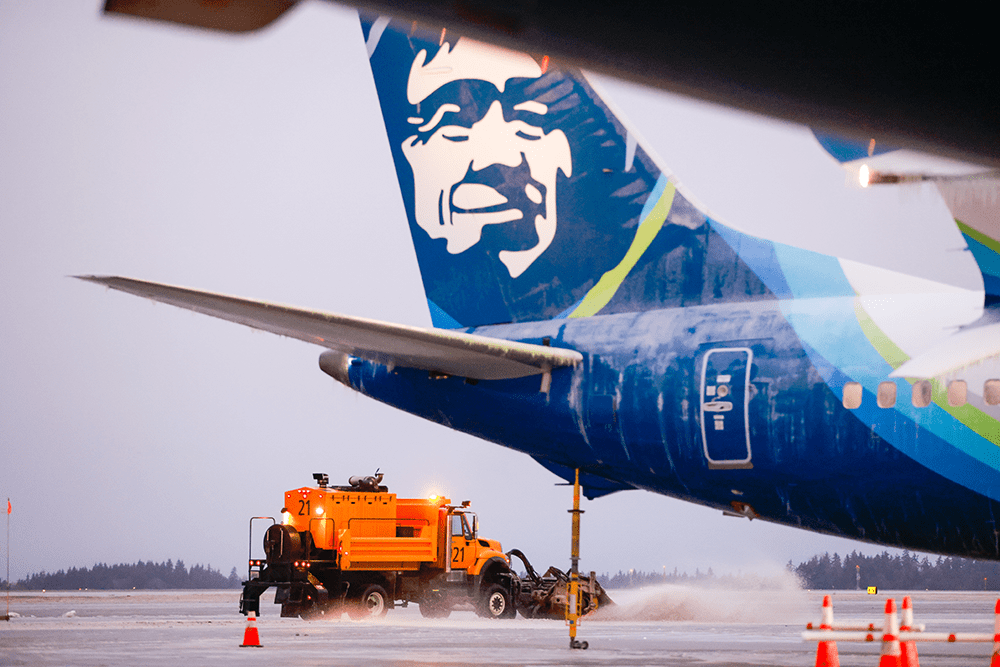
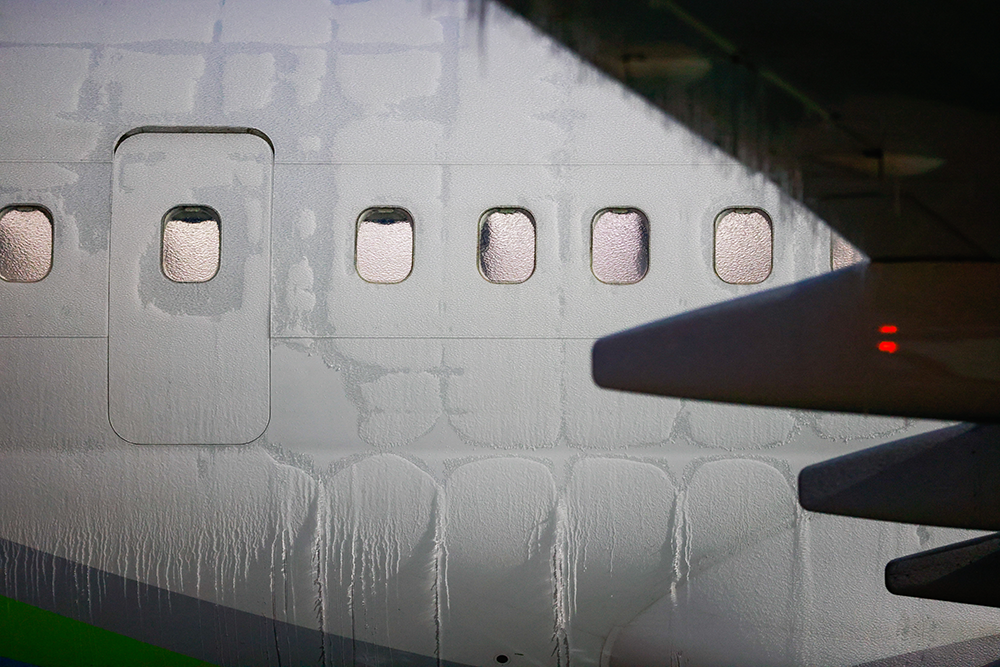

Generally, freezing rain is more challenging than snow and causes airline operations to slow down significantly or even halt completely until weather conditions improve. Aircraft must be completely clear of ice or snow to maintain the aerodynamic integrity and be safe for flight. It generally takes longer to clear an aircraft of ice than it does to clear it of snow.
While it is never our goal to disrupt someone’s flight, especially around the holidays, the safety of our guests and employees is our highest priority. If you are traveling this week, we encourage you to check the status of your flight before heading to the airport and take advantage of our flexible travel waiver, which has been extended and now includes Portland and Seattle, to rebook your travel.
Here’s what to do if your flight is impacted and a look at our strategy to fly in winter weather:
Should your flight cancel, you can rebook your trip online or on Alaska’s app
If your flight is impacted for any reason, you should receive a notification from our team and an accommodation on a new flight if flights are available. If you need to make further changes, you can use our app or go online to rebook your travel.
Should you wish to hold the value of your ticket(s) and decide to move your trip to a future date, you may place the value of your ticket in your Mileage Plan Wallet for future use or request a full refund by viewing our refund options.
Take advantage of our flexible travel waiver
Sometimes things like winter weather force you to adjust your travel plans. In those instances, we have a flexible travel policy you can use to waive the difference in the price of a new ticket (rules apply) and as always, we don’t charge change fees. Learn more

Download Alaska’s app
Our app is the perfect tool to have on hand when you fly with us. You can use it to check in, pay for bags and stay up to date on any changes to your reservation—it’s like having a travel agent at your fingertips.

Pro-tip: Turn on app notifications to get alerts from us + retrieve your boarding pass in one easy swipe on your home screen.
Sign up for flight notifications
Stay in the know by signing up for flight notifications via text or email. Unless otherwise noted, we will use your primary email address linked to your reservation for all communications.
If you’re using the app, be sure to refresh your reservation frequently and check your messages!
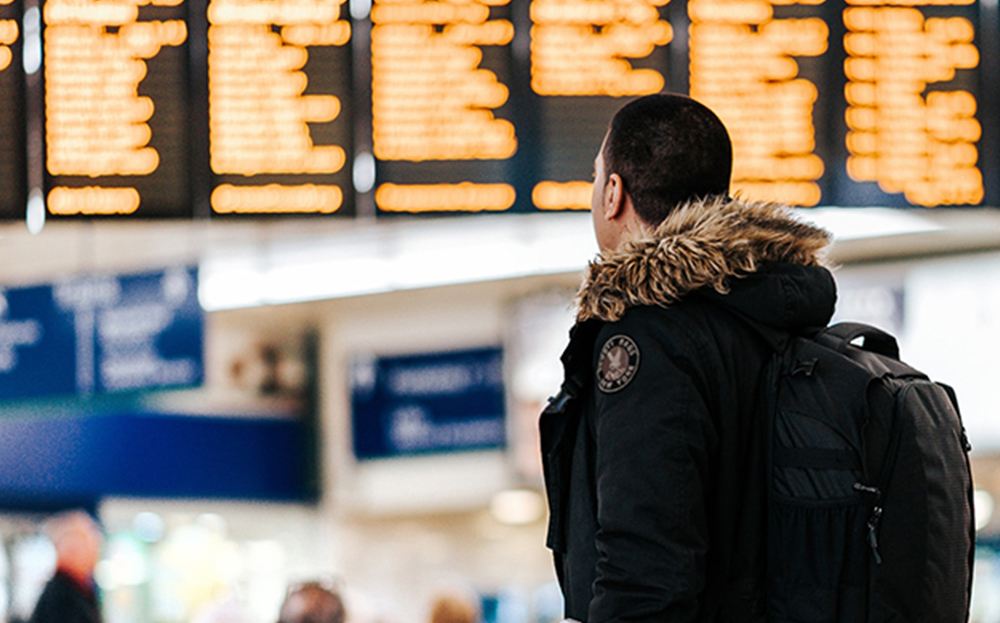
Call us, if you can’t rebook online
While we understand your first reaction might be to call our reservations team when your flight has been canceled, we’ve found you can save time by rebooking your trip online or on our app.
If your flight is impacted, you should receive a priority phone number to call via email if you’d like to discuss alternate options with one of our reservation agents—who are a constant and dependable source of reassurance and help when you need it most.
For all other reservation questions, guests can call 1 (800) 252-7522.

Why do the impacts feel worse in Seattle?
Seattle is Alaska’s hometown, and our operations represent the largest percentage (by a wide margin) of departures and arrivals at Seattle-Tacoma International Airport (SEA) compared to other airlines. Because of this, more of our guests are impacted when something impacts operations at Seattle. If another airline’s main hub got hit with a snowstorm, hurricane or power outage, they would be disproportionately impacted.
For context, SEA has a very small footprint by acreage compared to other metropolitan airports. This constrains our ability to deice our entire schedule of flights in wintry weather. Because the space doesn’t allow for that type of volume, we have to thin out our schedule to keep planes moving.
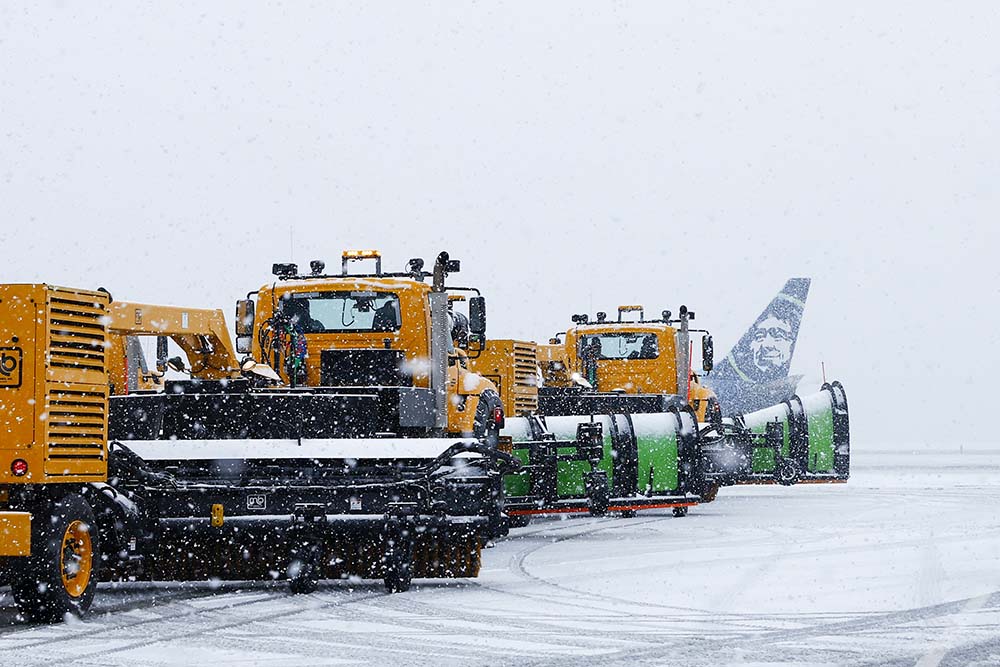
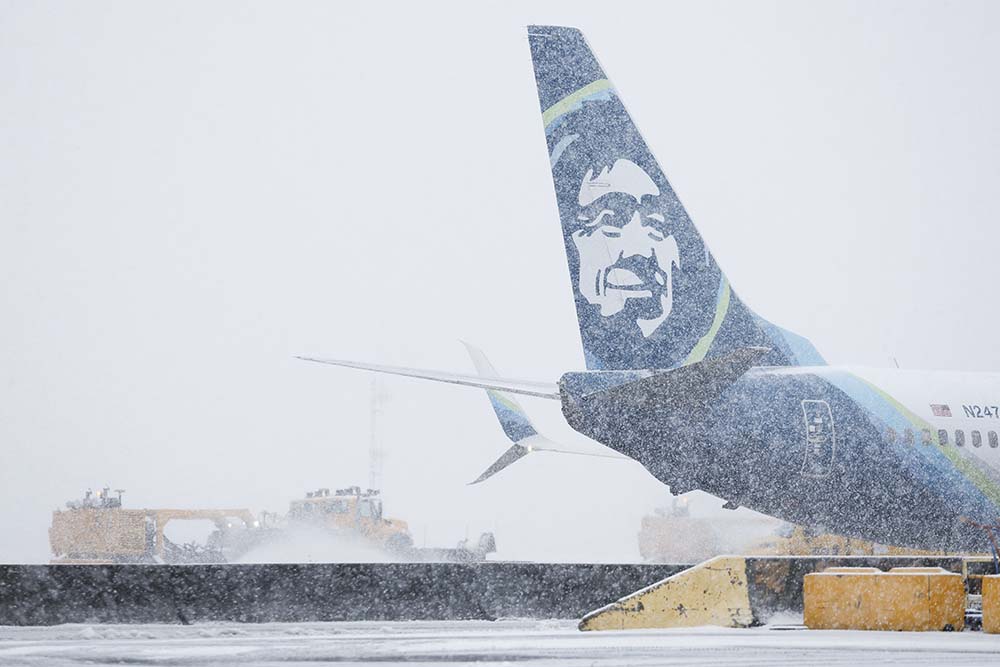
Why do we cancel flights before snow and ice arrives?
We use numerous tools and resources to help us predict the weather. When our forecasts tell us to expect snow or ice, we know we need to act. Freezing temperatures and precipitation mean that we need to deice our aircraft before they can safely fly (more info on that below). Much like putting chains or studded tires on your car before hitting a snowy road, deicing aircraft slows down our operation. This means we can’t move our normal number of aircraft into and out of the airport. In order to reduce traffic jams, we need to proactively cancel flights from our schedule so we can keep as many aircraft moving as possible.
If we need to cancel flights, we try and let impacted guests know as early as possible. This means it could look clear and beautiful outside, but your flight tomorrow may have been canceled.
Why does an airplane need to be deiced?
Whenever there’s any snowfall or ice on our aircraft, we begin deicing procedures as part of our safety protocol. Aircraft cannot safely operate if there is snow or ice accumulation on the wings or tails, so it’s critical that we remove it before takeoff.
We have a full fleet of trucks, equipment and personnel across our stations ready to do that work, along with a well-stocked amount of deicing solution. They work as quickly as the airport and weather conditions will safely allow. However, deicing aircraft at the gate can lead to longer wait times on the tarmac—but safety comes first.
📹 If interested in deicing b-roll, download it here.
